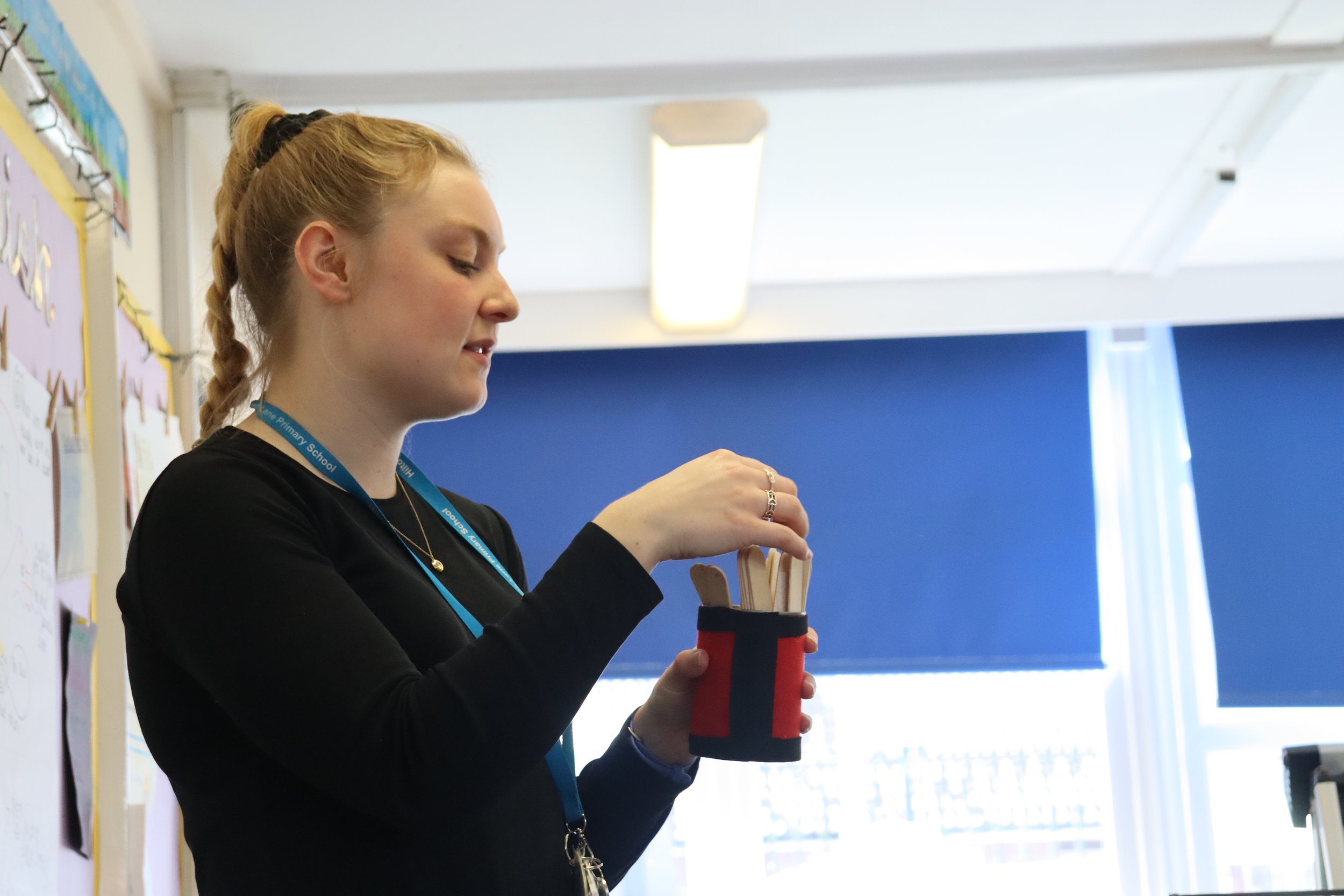I wrote recently about the benefits of random selection over ‘hands up’. Lolly sticks are a really simple way to randomly select children, but like anything they need to be used properly to ensure the intended positive outcome. Here are some tips:

A cup containing flat wooden sticks (‘lolly sticks’) with names on, one per child.
ask the question before picking a stick out of the cup
use a variety of questions, not just recall
give children time to think, and jot
let children talk to a partner
always put back the sticks so that children know they may be asked again
use the sticks genuinely as they are intended (e.g. don’t use tricks such as colour coding to select specific children; if you want to ask a specific child, just ask them – no need for lolly sticks!)
always use lolly sticks positively, never punitively
My top three strategies to make sure every pupil speaks during whole-class learning
The importance of positive, transparent systems for deciding who responds
Three essential ingredients to ensure pupils have the confidence to speak in front of their peers
Simple-yet-effective techniques to get three year olds talking and keep them focused.
When using random selection in whole class learning, if a child doesn’t respond, there are several options.
Lolly sticks are a really simple way to randomly select children, but like anything they need to be used properly.
Pupil Voice is an important part of my Talk Audits; here are some recent responses when I asked Key Stage 2 children their opinions about Hands Up…










